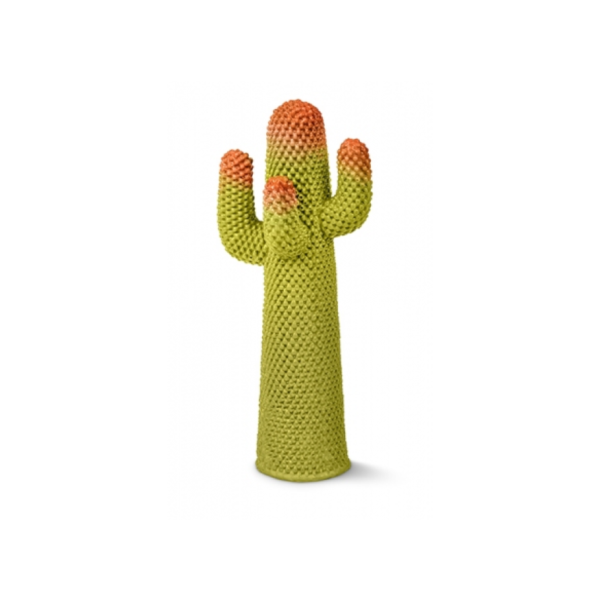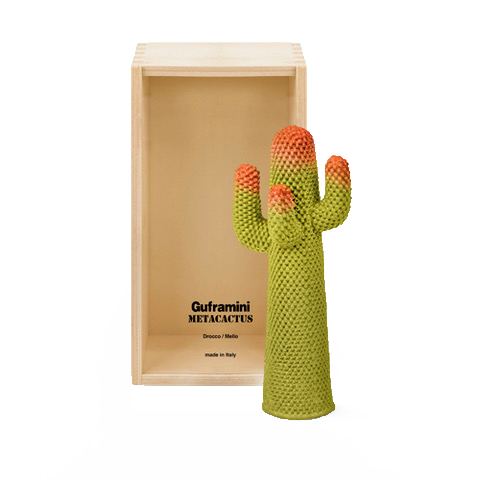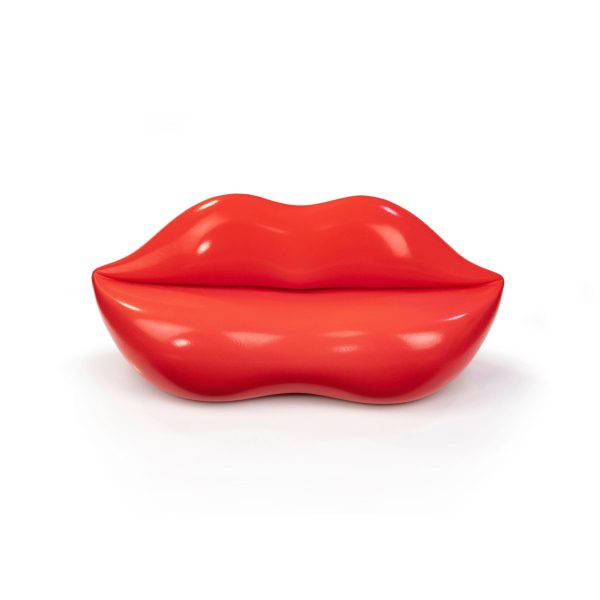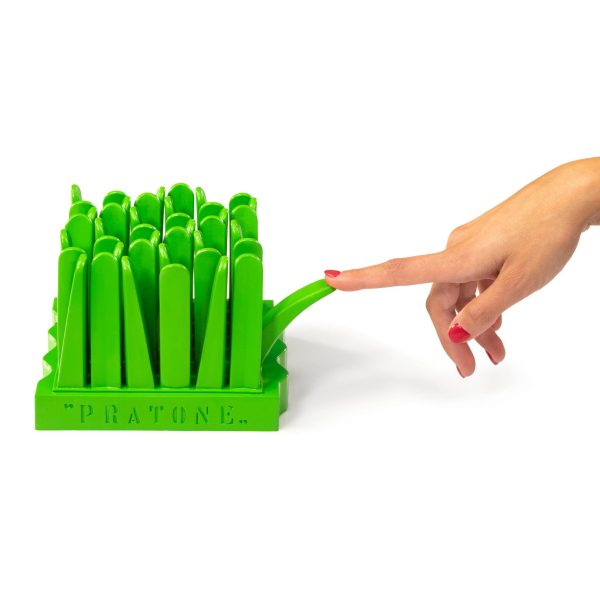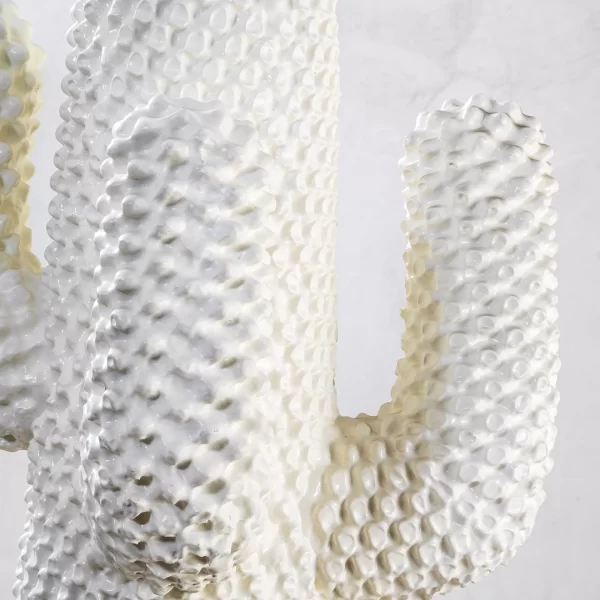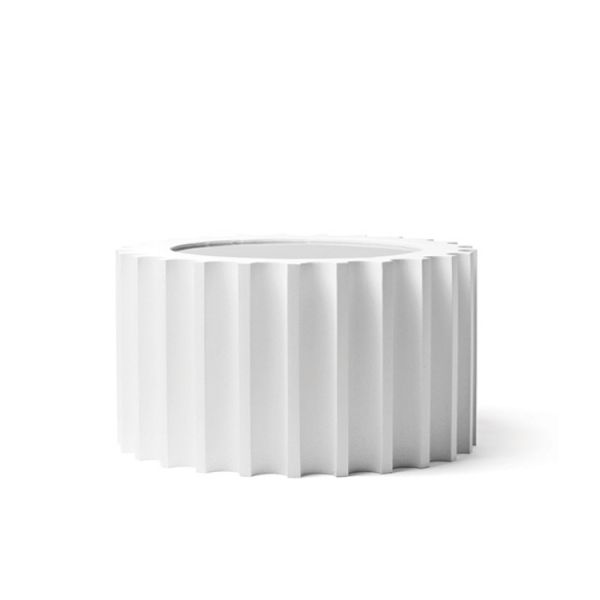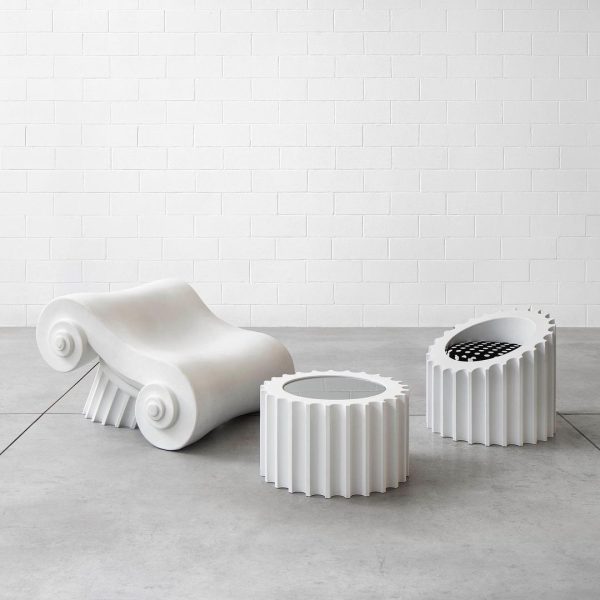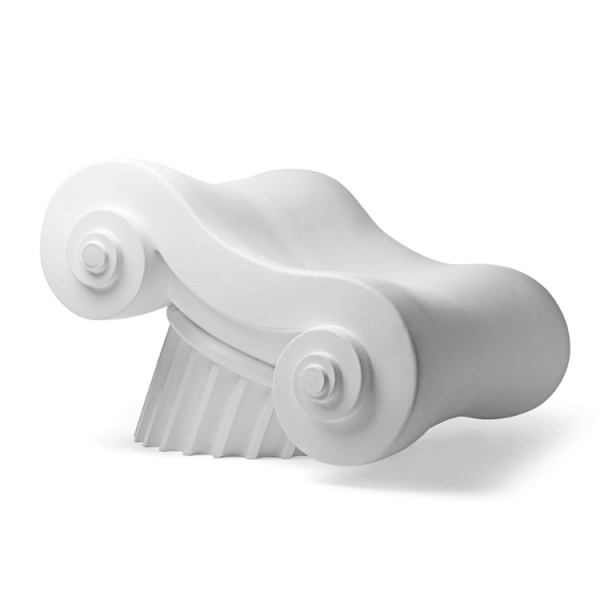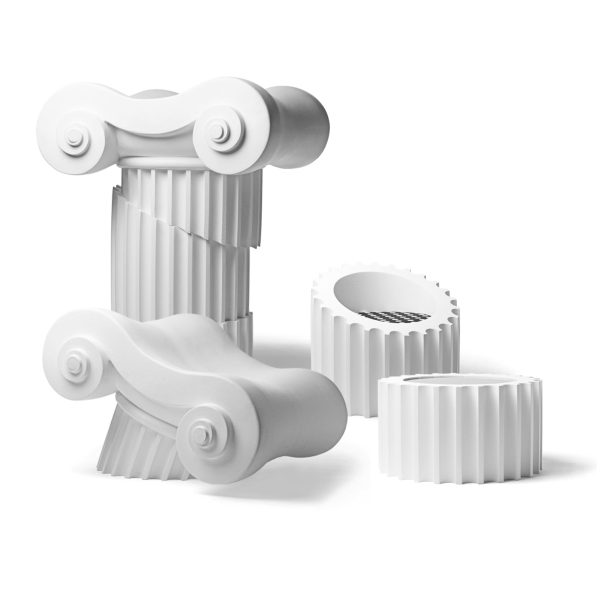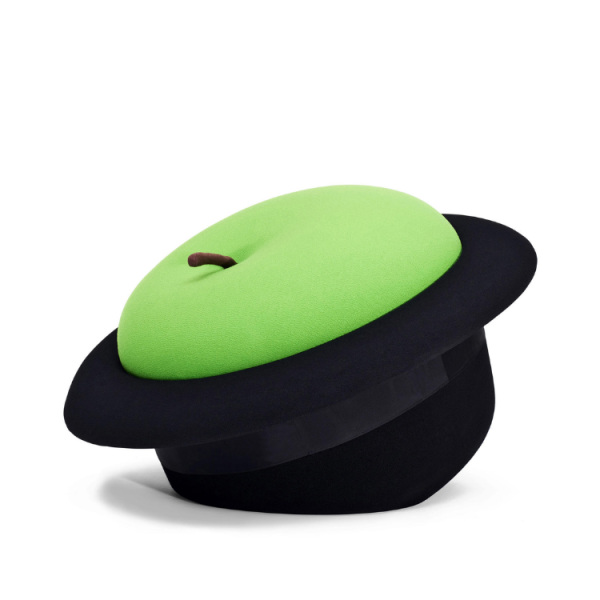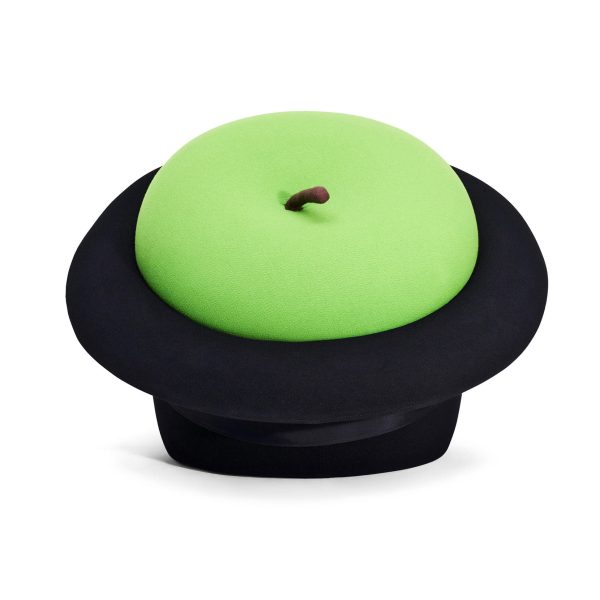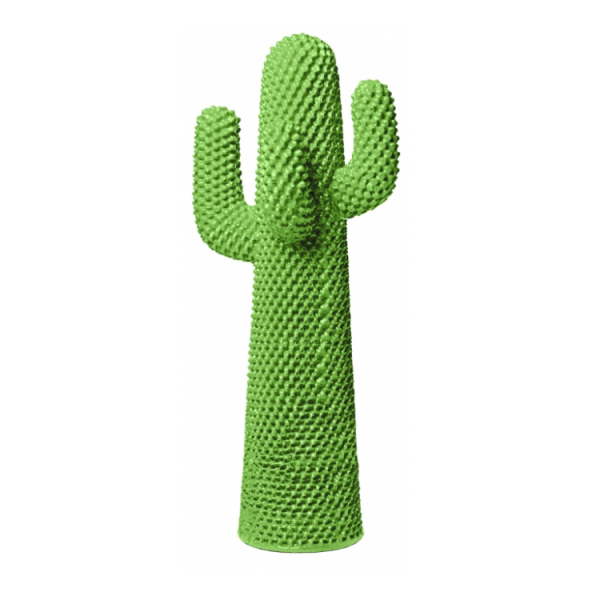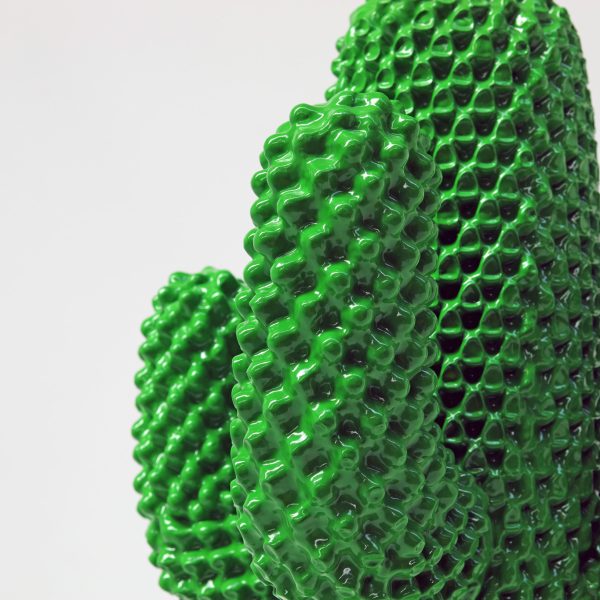Gufram
Guframini Metacactus
965 ₾For the 50th anniversary of GUFRAM’s most prickly icon, everything is illuminated, indeed lively! Including the Guframini CACTUS®, who for the big occasion present themselves with their best mise in a miniaturized version. A concentrate of irreverence on a scale of 1: 8. To celebrate the CACTUS® birthday, therefore, the Guframini METACACTUS® and LEBLEUCACTUS®, ANOTHER GREEN CACTUS® & ANOTHE R WHI T E CACTUS®, ROS SOCACTUS ® a n d NEROCACTUS® arrive! All together (shrunk down) passionately they keep their slightly cheeky nonconformity and their sophisticatedly sexy irony unchanged. Designed in 1972 by the creative mind of the duo Guido Drocco and Franco Mello, CACTUS® perfectly portrays the always avant-garde vision of the Gufram brand, its desire to overcome the limits of design and its Radical Design spirit. A vision that remains intact even in the miniatures of domestic sculptures exhibited in museums around the world. Each mini-reproduction is made of polyurethane foam which is injected into the previously painted mold so as to obtain a unique piece identical to the original: same softness, same colors and same details. Each Guframini is then finished by hand thus becoming a unique piece. … And above all unrepeatable. Size doesn’t always matter!
Guframini Bocca
775 ₾As if in a fairy tale, the Gufram icons have become smaller and have now turned into Guframini®! The most radical Italian design company has just revealed some brand new creations for its fans: miniatures of the Bocca®, Cactus® and Pratone® designed in a 1:8 scale; the new miniatures perfectly reproduce the smallest details of the famous domestic sculptures exhibited in the world’s leading museums.
The little Bocca®, drawing from the exact proportions of the original version, maintains the sinuous feel and sensuality of a woman’s lips, exactly as intended by Studio65 which designed it in 1970. But, unlike her big sister, she has decided to get rid of her fabric dress and be coated just like her other two little friends. This visionary and glamorous sofa has inspired artists and photographers as a much-photographed protagonist and the center of attention in exhibitions all over the world. Now, it will become a sassy accessory in the most cutting-edge homes.
Guframini Pratone
890 ₾As if in a fairy tale, the Gufram icons have become smaller and have now turned into Guframini®! The most radical Italian design company has just revealed some brand new creations for its fans: miniatures of the Bocca®, Cactus® and Pratone® designed in a 1:8 scale; the new miniatures perfectly reproduce the smallest details of the famous domestic sculptures exhibited in the world’s leading museums.
The mini Pratone® plays with the juxtaposition of a “large-small” proportion by reducing to 7/8 the giant Pratone that was designed in 1972 by Ceretti, Derossi, and Rosso, and exhibited that year at the MoMA as part of the Italy: The New Domestic Landscape exhibition. Just like the original version, the base of the “mini” sculpture shows the writing ‘Pratone’ on one of the sides, and 42 soft stems stretching in different directions complete the radical look of this little icon.
Another White Cactus
Cactus is the icon of Italian design that has revolutionized the domestic landscape. Made of flexible polyurethane this hall tree with four cantilever arms is as tall as a person and looks like an ironic totem.
It was created in 1972 and since then it is made and painted by hand. Over the years Cactus has been produced in several colours for as many limited and numbered editions on exhibit in the most important museums in the world.
Attica TL Table
8,915 ₾Attica TL coffee table is designed by Studio 65 for Gufram in soft polyurethane finished by hand with Guflac ultra, with a bifacial glass surface, opaque on one side and mirror shiny on the other.
Limited edition 1/1000 of 1971
The armchair Attica, a transversal section of the trunk of a column, and the coffee table Attica TL are sculpted by hand from a block of polyurethane, as a contemporary variant of the original production process of columns in Athens.
Attica Armchair
9,500 ₾Attica armchair is designed by Studio 65 for Gufram in soft polyurethane finished by hand with Guflac ultra, with a dotted black and white cushion.
The armchair Attica, a transversal section of the trunk of a column, and the coffee table Attica TL are sculpted by hand from a block of polyurethane, as a contemporary variant of the original production process of columns in Athens.
Capitello Armchair
The intriguing Capitello Armchair was created by designers Franco Audrito and Piero Gatti for leading Italian design company Gufram.
Magritta Chair
MAgriTTA is a sculpture-armchair, homage to Surrealism.
The green apple and the black bowler hat, recurrent figurative elements in the works of René Magritte, are assembled by the visionary imagination of Sebastián Matta into a new seat, realized in polyurethane foam and covered with cloth.
Playing with the unexpected association – an apple in a hat? – and with the dimensional estrangement – an apple which is as big as a hat or a hat which is a small as an apple? – Matta is able to translate the deception, the joke and the illusion of Magritte’s works into a design object.
The ABS hat works as the structure while the apple, made of soft polyurethane foam and upholstered with elastic cloth, becomes a comfortable and soft seat.
Another Green Cactus
The subject of several, free and often ambiguous interpretations, Cactus is the icon of Italian design that has revolutionized the domestic landscape, by subverting the borders between indoor area and open space. Cactus comes as an ironic totem, and embodies the grit, the imagination and the humour of the design of the Seventies. Likely to draw upon itself everybody’s attention, this hall-tree redeems itself from functionalism at all costs, because it can perform its function, but also be used as a merry decorative element. You have freedom of interpretation. Cactus comes to life in 1972 thanks to the genius of Guido Drocco and Franco Mello, and from the start it questions the static and rigid world of interior design.


